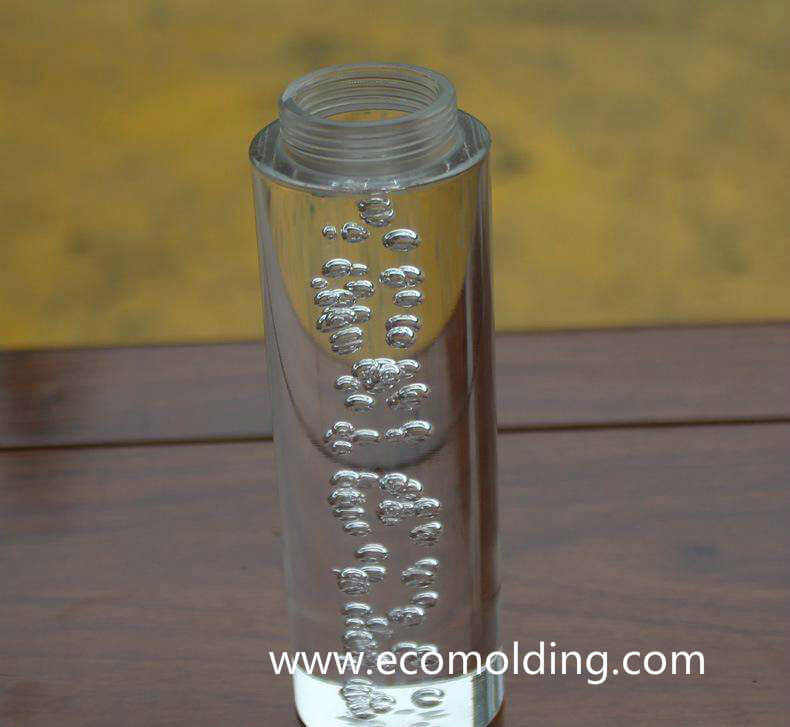
According to the cause of air bubbles or vacuum voids , the solutions to the defects are described as below:
(1) When the wall thickness of the product is large, the outer surface is cooled down faster than the center portion. Therefore, as the cooling progresses, the resin at the center portion is expanded toward the surface while shrinking, so that the center portion is insufficiently filled. This situation is referred to as air bubbles, to which the main solutions are:
a) Determine the proper gate and runner size based on wall thickness. Generally, the height of the gate should be 50%-60% of the product wall thickness.
b) A certain amount of supplementary injection material is retained until the gate is sealed.
c) The injection time should be slightly longer than the gate sealing time.
d) Lower the injection speed and increase the injection pressure
e) Select a material with a higher melt viscosity.
(2) The air bubbles caused by volatile gases are mainly solved by:
a) Sufficient pre-drying.
b) Lowering the resin temperature to avoid gases caused by decomposition.
(3) Air bubbles caused by poor fluidity can be solved by raising the resin / mold temperature and increasing the injection speed.
